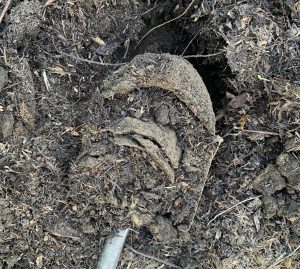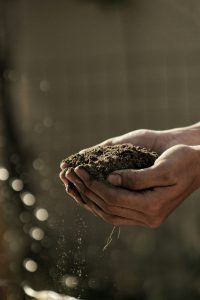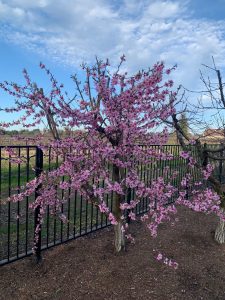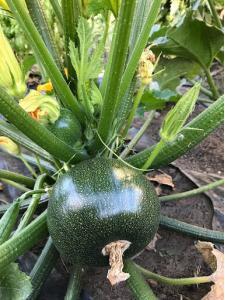Learn about common garden mistakes and how to avoid them in this blog. Gardening is a rewarding and therapeutic endeavor, but even the most seasoned gardeners can make mistakes that impact the health and vibrancy of their plants. In this guide, we’ll explore ten common gardening mistakes to avoid, ensuring your garden thrives and becomes a lush haven of beauty. But before I dive in, please understand that making mistakes is a part of gardening. If you aren’t making mistakes, you aren’t trying new things and I am the first to admit I am guilty of each one of my top 10 at some point in my growing adventures. So give yourself a break. Know that gardening mistakes happen and experiment to learn!
Gardening Mistakes involving Soil and Water
One of the fundamental aspects of successful gardening is having nutrient-rich soil. Avoid gardening mistakes that include neglecting soil health by regularly testing and amending it with organic matter. Invest in compost and well-rotted manure to keep your soil in optimal condition.

Soil is made up of rock, sand, silt, and clay. Of course, there are boulders and large rocks but these are not common in garden soil. Soil is classified by the different sizes of particles, and the proportion of those sizes. The primary particles are sand, silt and clay. Sand particles are classified between 2.00 mm and 0.05 mm. Silt is anything between 0.05 mm and 0.002 mm and clay is less than 0.002 mm. The proportion of these three elements will determine the type of soil you have.
If you have too much of any one you’re gonna have problems, but there is a way to mitigate the inadequacies. You can do some simple tests at home to estimate how much of the different three particles you have. Alternatively, you can send soil samples to labs to test. I routinely test my soil every year to get an idea of how things are looking on my giant pumpkin growing adventure.
When there is too much sand, the spaces between the particles are too large and water flows through too quickly as a result. When this happens, it is difficult to keep your soil hydrated and absorb nutrients. If there is too much clay and not enough sand, for example, the opposite happens. Water will not pass through the soil enough and over-saturate it. Less oxygen is present and thus less microbial life. Consequently, fewer nutrients can be absorbed by the roots in this case.
To dive deeper, check out my giant pumpkin soil post or consider my book, Backyard Big: Growing Food in Your Backyard.
Finding the right balance for watering is crucial. Overwatering can lead to root rot, while underwatering can result in stunted growth. Learn the specific water needs of your plants and create a consistent watering schedule to prevent moisture-related issues.
Consider purchasing a soil testing probe and giving your soil a check throughout the growing season. Get a soil sample, squeeze a fistful in your hand and it should hold together nicely. It shouldn’t be dry or muddy. Your watering habits depend on your soil time and climate.
Most gardeners overwater and you should look for the signs: yellow plant leave, mold or fungus growth, wilting leaves, moldy smell, stunted growth, and waterlogged soil.
Ignoring Sunlight Requirements
It’s a common scenario: captivated by the allure of a beautiful plant, you bring it home, envisioning a thriving addition to your garden. However, the enthusiasm sometimes leads to a hasty decision, placing the plant in a suboptimal corner of your yard without considering its specific sunlight needs. Eagerly hoping that the plant will adapt to its less-than-ideal surroundings, you wait, only to witness it struggling to survive in the inadequate conditions.
Recognizing the need for change, you embark on a quest to find a more suitable spot, one bathed in the warm embrace of sunlight. The plant, finally relocated to this sunnier haven, undergoes a remarkable transformation. With each passing day, it not only survives but thrives, unfurling its leaves and blossoming into the vibrant vision you had envisioned.
The key lesson here is understanding the distinct sunlight preferences of your plants. Each species has its own requirements, ranging from full sun to partial shade or full shade. To ensure the optimal growth of your garden inhabitants, it’s crucial to conduct thorough research on the sunlight needs of each plant. Armed with this knowledge, strategically place them in locations that align with their requirements, allowing them to bask in the right amount of sunlight.
Take the time to assess your garden’s microclimates, considering factors such as the angle and duration of sunlight exposure in different areas. By aligning your plant selections with these natural conditions, you not only enhance their chances of survival but also promote their overall health and vitality. In essence, investing the effort to understand and cater to the sunlight preferences of your plants ensures a garden that flourishes with life and color.
Crowding Plants and skipping the Mulching and Composting
The allure of a lush and abundant garden often tempts even the most seasoned gardeners to commit the sin of overcrowding. It’s a scenario familiar to many — the impulse to fill every available inch with vibrant greenery and colorful blooms. However, this seemingly innocent act can have detrimental consequences as plants vie for limited resources like nutrients and sunlight, leading to a host of problems.
To safeguard your garden’s health, it’s essential to resist the urge and adhere to recommended spacing guidelines. Each plant requires ample room to spread its roots, stretch its branches, and receive the nourishment it needs to thrive. Overcrowding manifests itself through telltale signs such as weak and “leggy” growth, inadequate air circulation, growth and disease issues, stunted development, yellowing leaves, heightened root competition, and more.
Recognizing these signs prompts the need for intervention. Addressing overcrowding becomes paramount, and this can be achieved through strategic thinning. By selectively removing excess plants or transplanting them to larger containers or more spacious areas, you create breathing room for the remaining flora. This not only alleviates competition for resources but also mitigates the risk of diseases spreading in the crowded quarters.
Providing plants with adequate spacing serves as a transformative remedy. It ensures that each plant has unhindered access to sunlight, nutrients, and water, fostering more effective absorption and utilization. The result is a garden that not only looks visually appealing but also teems with healthier, more robust growth and overall vitality.
In the art of gardening, the virtue lies in understanding and respecting the individual needs of each plant, allowing them the space to flourish in harmony. Resist the temptation to overcrowd, and your garden will reward you with a symphony of colors, textures, and flourishing life.
Mulching is often underestimated but plays a crucial role in retaining soil moisture, preventing weeds, and regulating soil temperature. Avoid the mistake of skipping mulching, and use organic materials like straw or wood chips to protect your garden.

Composting is the activity of making compost. What is compost? Essentially, it is humus. Humus is defined as the dark organic matter formed by the decomposition of plants and animals. The finished compost resembles humus as we break down the plant parts.
By adding humus to your garden, you add a slow-release fertilizer, supplying nutrients to your plants over time. You also improve the soil structure to help with water and nutrient retention, ensure sufficient aeration, and help with drainage. The humus adds nutrients to the soil that can be accessed by plants.
I use my compost pretty much everywhere in my yard. I use it heavily in my vegetable beds, adding several inches on top of my raised-beds every year. As I strive to avoid rototilling, the humus will just sit on top of my garden beds while things last over the winter. I also add it to my orchard, and anywhere I feel I need better soil.
Check out my composting post for some inspiration.
Ignoring Pest Prevention
Gardening mistakes can reveal themselves several weeks after you have missed an important opportunity to treat for pests. The tranquility of a thriving garden can be swiftly disrupted by the insidious invasion of pests, capable of wreaking havoc on your carefully cultivated oasis. Left unchecked, these intruders have the potential to decimate plants and disrupt the delicate balance of your garden ecosystem. To safeguard the vibrancy of your green haven, it becomes imperative to embrace proactive pest prevention measures.
One effective strategy in this battle against pests is the art of companion planting. By strategically selecting plant companions that naturally deter or repel specific pests, you create a living fortress that minimizes vulnerability. This symbiotic relationship not only enhances the aesthetic appeal of your garden but also serves as a natural deterrent against potential threats.
Embracing the concept of employing natural predators adds another layer of defense to your gardening arsenal. Beneficial insects such as ladybugs, predatory beetles, and parasitic wasps can be introduced to your garden, serving as vigilant guardians against pest infestations. These biological allies contribute to the delicate ecological balance, preying upon harmful pests and maintaining a harmonious coexistence within the green tapestry of your outdoor sanctuary.
Regular vigilance is the cornerstone of effective pest management. Routinely inspecting your plants for signs of infestation allows for early detection and prompt intervention. Look for telltale indicators such as discolored leaves, chewed foliage, or the presence of pests themselves. Swift action in response to these signals can prevent the escalation of the problem and mitigate potential damage to your garden. The best time to spy on your garden is at night and a headlamp is an indispensable tool.
In the quest for a pest-resistant paradise, combining these proactive measures becomes a holistic approach to garden care. By fostering a biodiverse and resilient ecosystem, you not only protect your plants but also promote a sustainable and thriving environment. Embrace the proactive stance against pests, and your garden will flourish as a testament to your commitment to its well-being.
Failing to Prune and Fertilize
Pruning, often likened to the gentle sculpting of a garden’s living canvas, is a fundamental chore that wields the power to enhance both the aesthetics and vitality of your plants; however, improper pruning is one of the most common gardening mistakes. While the benefits of this horticultural practice are manifold, a misstep in the art of pruning can lead to unintended consequences, potentially causing harm rather than fostering growth. To wield the pruning shears with finesse, it is imperative to acquaint oneself with the correct techniques tailored to the unique characteristics of each plant, ensuring a harmonious choreography of growth and form.
Understanding that different plants have varied responses to pruning is the first step in mastering this delicate skill. Some species thrive with a more liberal trim, while others prefer a conservative approach. Trees, shrubs, and herbaceous perennials each have their own set of rules when it comes to pruning, and knowledge of these distinctions is essential for guiding your pruning hand with precision.

Timing, akin to the conductor’s baton, plays a pivotal role in orchestrating the pruning symphony. The appropriate season for pruning varies depending on the plant type, with general principles often aligning with periods of dormancy or specific stages in the growth cycle. Pruning during the dormant winter months, for example, is often ideal for many deciduous plants, while spring or early summer pruning may suit others.
To embark on a journey of effective pruning, arm yourself with knowledge about the specific needs and responses of your plants. Researching the ideal techniques and timing for each species in your garden provides you with the virtuosity to wield your pruning tools as instruments of encouragement rather than harm.
In essence, pruning is not just a task; it is a nuanced art form that, when practiced with care and understanding, transforms your garden into a living masterpiece. By embracing the correct techniques and aligning your efforts with the seasons, you become the steward of healthy growth and sculptor of botanical beauty, ensuring that each plant thrives in its unique role within the vibrant tapestry of your garden.
The vitality of your garden lies in the nourishment it receives, and the often overlooked key to this prosperity is the application of the right nutrients. One common misstep in the realm of gardening is the unintentional neglect of fertilization. Plants, like any living organisms, crave sustenance, and providing them with the essential nutrients is paramount to unlocking their full potential.
Another one of those gardening mistakes we all make is improper fertilizing. In your quest to cultivate a thriving garden, consider the adoption of a balanced fertilizer as your botanical elixir. This carefully crafted blend is designed to supply a spectrum of nutrients essential for robust plant growth. The art lies not only in choosing the right fertilizer but also in adhering to recommended application rates. Over-fertilization can be as detrimental as under-fertilization, underscoring the importance of precision in nourishing your garden.
When it comes to selecting a balanced fertilizer, the nutrient content is often represented by a series of three numbers on the packaging, denoting the ratio of nitrogen (N), phosphorus (P), and potassium (K). Understanding these ratios ensures that your plants receive a well-rounded diet, supporting their root development, flowering, and overall vitality.
The application of fertilizer becomes a carefully orchestrated ritual, executed in accordance with the unique needs of each plant species. Following recommended rates ensures that your green companions receive just the right amount of nutrients, avoiding the risk of nutrient imbalances that can impede their growth.
In essence, fertilization is the lifeline that sustains the beauty and productivity of your garden. By diligently providing the necessary nutrients, you not only enhance the aesthetic appeal of your outdoor sanctuary but also foster an environment where plants flourish with exuberance. Embrace the art of balanced fertilization, and watch your garden transform into a vibrant tapestry of life, each plant reaching its full potential in a symphony of colors, textures, and vitality. More information can be found in my post about fertilizing.
Overlooking Planting Times and Ignoring Hardiness

One of the most common gardening mistakes is planting too early or too late. It is a gamble that can subject your green companions to the capricious whims of weather and environmental conditions. To navigate this delicate balance, research your green friends to unveil the optimal planting times for your specific region and the unique needs of each plant species in your care.
Each geographical locale carries its own set of climatic nuances, and plants respond differently to the subtle shifts in temperature and daylight. Delving into the intricacies of your region’s growing seasons equips you with the knowledge needed to synchronize your gardening endeavors with nature’s clock. Understanding the ideal windows for planting helps shield your plants from the harsh throes of frost, excessive heat, or other unfavorable weather extremes.
Furthermore, the specificity of your research should extend to the individual preferences of the plants adorning your garden. Some may revel in the cool embrace of early spring, while others might thrive under the warm caress of late summer. By aligning your planting schedule with the nuanced needs of each species, you create a tailored environment conducive to their flourishing.
In essence, the timing of your planting endeavors is the linchpin determining the success of your garden’s tapestry. Embrace the role of the attentive conductor, weaving together the threads of knowledge about your region’s climate and the unique characteristics of your plants. In doing so, you not only safeguard your garden against the vagaries of nature but also set the stage for a vibrant and bountiful display, each plant flourishing in perfect harmony with the seasons.
The selection of plants for your garden is akin to casting characters for a play; each must be chosen with careful consideration to ensure they play their part seamlessly. An all-too-common pitfall lies in the temptation to introduce exotic or visually appealing plants without due regard for their compatibility with the prevailing climate. This oversight, however, can lead to not just disappointment but also to the struggles of plants trying to adapt to unfavorable conditions.
To cultivate a thriving garden, it is essential to become a discerning director, selecting plants that are perfectly suited to the climatic stage on which they will perform. Temperature, humidity, and soil conditions are the key actors in this botanical drama, and the success of your garden largely hinges on the synergy between these factors and the chosen flora.
Considering your specific region’s climate zone becomes paramount. Plants that have evolved to thrive in particular temperature ranges, humidity levels, and soil types are the seasoned actors of your garden’s narrative. By embracing native or well-adapted species, you ensure that each plant is not just a mere visitor but an integral part of the ecological ensemble.
Before finalizing your green cast, delve into the intricacies of your local climate. Research the temperature variations, seasonal changes, and soil compositions that characterize your region. Armed with this knowledge, you can curate a selection of plants that not only survive but flourish, contributing their unique beauty to the overall spectacle of your garden.
In essence, thoughtful plant selection is an act of horticultural casting where the stars align with the stage. By choosing plants that harmonize with your climate’s natural cadence, you set the scene for a garden that not only captivates the eye but also thrives in perfect synchrony with the environmental symphony surrounding it.
More Information
Avoiding these common gardening mistakes will set you on the path to a flourishing and vibrant garden. Remember that every gardener learns from experience, so embrace the process, stay attentive to your plants’ needs, and enjoy the journey of cultivating a beautiful outdoor oasis. Happy gardening!
Be sure to check out my book Backyard Big: Growing Food in Your Backyard for gardening tips. I also wrote a book about growing giant pumpkins, called Backyard Big: Growing Atlantic Giant Pumpkins in Your Backyard.

